Did you know sourdough starters sometimes smell like barf?
Plus visiting all the museums. My Pronking Year: April
Not that long ago, I was doing extra credit for high school chemistry lab by making cream soda. I needed extra credit because my lab partner not only didn’t care about grades, but he also dropped one of our projects, and we got a 20% on it. So, I jumped at the opportunity to do this little kitchen chemistry assignment. My dad missed his days stage managing our science fair projects and joined in. Something went wrong. After a week of carbonating the soda in the front closet, we were finally ready to sample it. Since it was my project, I got the first sip. It was vile. Flat. Funky. Ick. I had the presence of mind not to react. I handed Dad a bottle and enjoyed the look of surprise and disgust that flashed on his face, and that I was on the giving end of a little prank for once.
I gave up on homebrew for years until I found a recipe for ginger beer. I made several successful, delicious, spicy batches. I thought I had it down to an art. Then, one random weeknight, Julio and I were watching TV and drinking glass after glass of homemade ginger beer when we suddenly realized…we were getting drunk. Not on purpose.
Making a Sourdough Starter from Scratch
When the big sourdough and canning craze of 2020 hit, I sat that out. I was pregnant and busy trying not to get sick.
Recently, though, the gut biome has been on my mind. Maybe it’s all those godforsaken Ryze ads, which have promised to cure everything from menopause to ADHD with mushroom coffee.
I saw a recipe for fermented carrots and ginger (which I still have not made) and wanted to try it, but given my past hiccups, I also wanted to understand fermentation better before I started. I headed to the library. While paging through Traditionally Fermented Foods and The Tiny But Mighty Farm, I discovered that sourdough is fermented and can be a prebiotic food. In all the times I heard about sourdough starters, I never gave a second thought to the starter’s purpose. Or that fermentation provides the sour flavor. With my big, expensive brain, I am amazed by all the simple things I still don’t know.
As My Pronking Year slow project for April, I made my first sourdough starter and two batches of bread. The starter’s name is Sloan, after the author of the book Sourdough, which I have thought about regularly and affectionately since it came out in 2017. I was working in the jail library then, and I had difficulty convincing the guys there to read this fun little magical realist novel about bread.
In the book, Lois has a terrible tech job with horrible hours, and so most nights she eats takeout from a tiny restaurant run by two brothers. When their visas run out and they disappear, they leave her their sourdough starter. It is sort of magical. It sings. It grows a lot. It teaches her to find community.

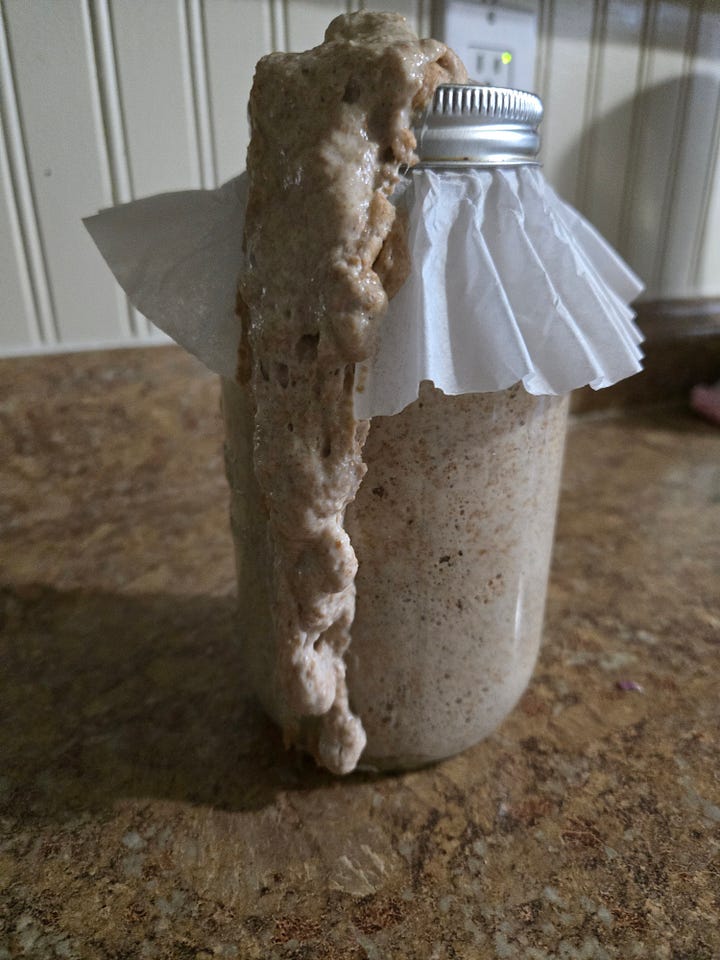
As I did not know any mysterious brothers to procure a starter from, I made my own using the recipe from Traditionally Fermented Foods. I fed it every twelve hours for eight days. The first four feedings caused Sloan to grow so rapidly, I thought it might take over the house. Then, it developed the distinct aroma of vomit.
“This is it,” I thought. “I’m going to poison us.” Smelling a hint of barf from across the room, I decided to do more research. Thank you, Reddit, for being a place on the internet where I can always find other people interested in the thing I’m curious about. I have consulted it about woodworking, spiders, needlefelting, and now sourdough. It turns out that the barf smell came from a buildup of butyric acid, a byproduct of fermentation. It is common for this stench to arrive on Day 3. It’s not a bad sign. More frequent feedings can help, but also as the bacterial bloom levels out, the fresh, yeasty smell should come. Some people’s starters smell like acetone instead of barf. I made no changes to the process, and by Day 5, Sloan smelled great. That did seem magical, even if Sloan has yet to sing.
On Day 8, I baked a loaf of wheat bread using dough made with a cup of starter and allowed to ferment overnight.
When it came out of the oven, it looked like bread. It cut like bread. I was nervous to taste it. It tasted a bit like iced tea. I called Julio, our resident baker, over to try. He confirmed: I made sourdough.
The flavor reminded me of going to Shapiro’s Deli with my grandparents. But, now that I was a grownup, not a little kid eyeing the purple, pickled eggs suspiciously, I liked the flavor a lot more.
Last night, I made a loaf using white flour and tried some fancy scoring. I watched a couple of tutorials and borrowed Julio’s bread scoring tool. I made some leaves, and I tried to make an alpaca. My alpaca looked like a cave painting. The bread was good, though. Next, I want to try golden wheat. I am keeping Sloan alive using the method where I feed it once a week.
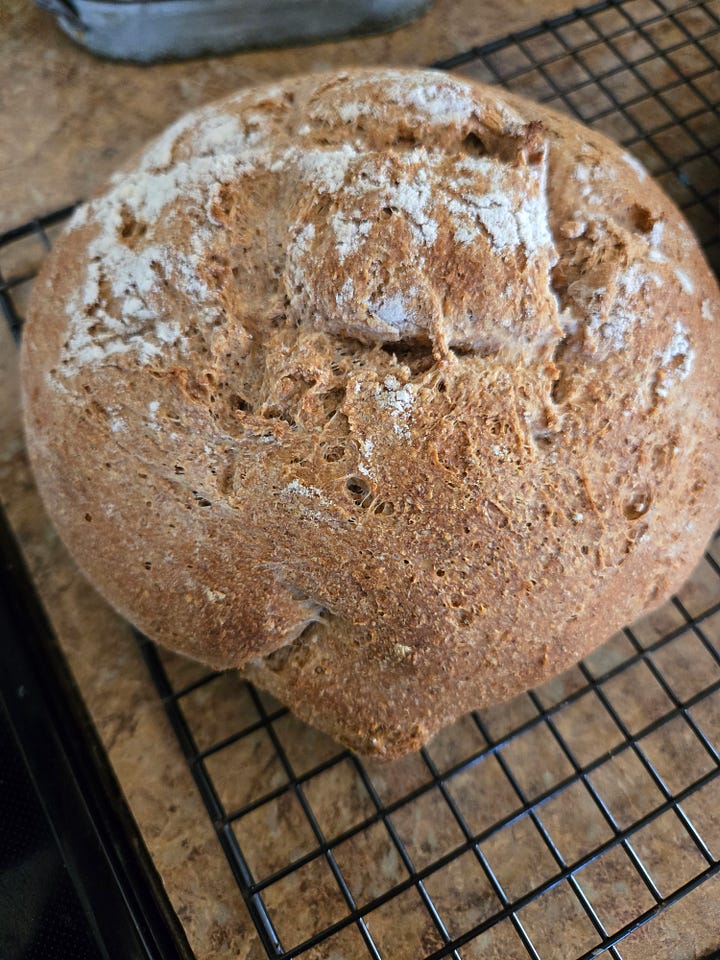

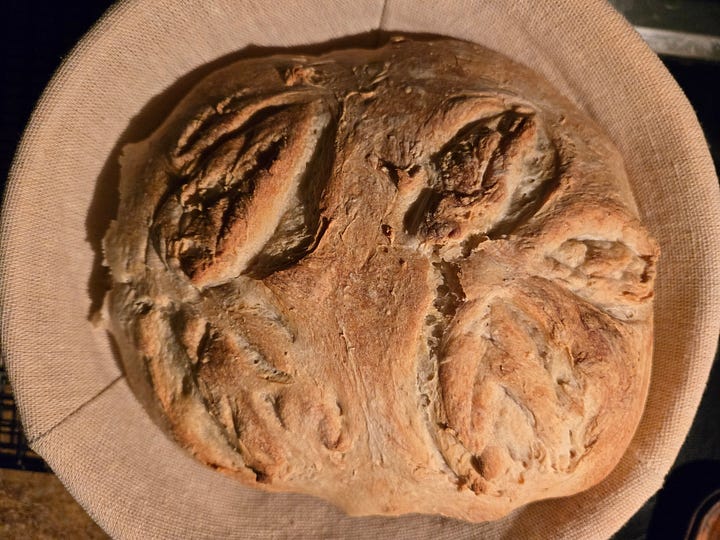
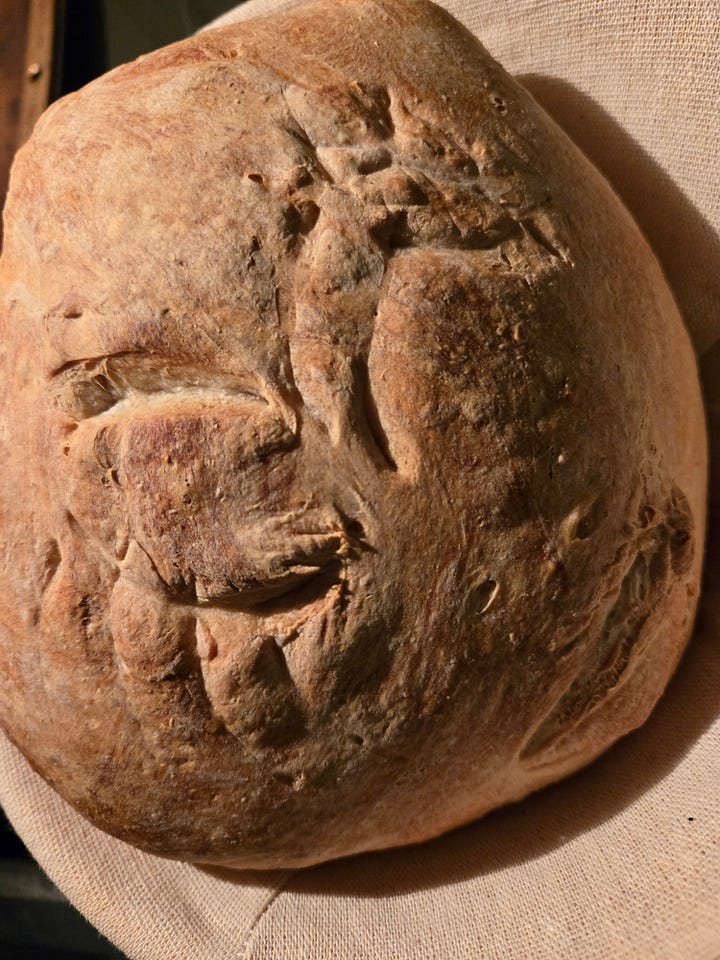
I am most surprised by how simple this all was. I understand why people get obsessed with sourdough. I want to try to make pancakes, pizza dough, and naan with the discards from my starter. I want to make beautifully scored loaves. I am waiting on an armload of books about sourdough from the library.
Do you have a favorite sourdough recipe or technique? Please tell me!
Books consulted for this project (with Bookshop.org affiliate links):
Sourdough by Robin Sloan
Traditionally Fermented Foods by Shannon Stronger
The Tiny But Mighty Farm by Jill Ragan
The Sourdough Whisperer by Elaine Boddy
In Search of the Perfect Loaf by Samuel Fromartz
Girls’ Day at the Museums
My daughter’s school was closed on Friday and Monday for parent-teacher conferences. I was thrilled that his closure aligned with this year’s Volunteer Appreciation Week, so I was able to use my volunteer week perks to take her to the Denver Art Museum, Clyfford Still Museum, and History Colorado. They are all on the same block downtown, so we could park in the garage and have a nice car picnic for lunch.
It was a lot. But we went to the Art Museum together three times previously, so that helped with expectation setting and allowed us to focus on new exhibits. A gallery of Korean Moon Jars was really beautiful and had a video of how they are made, which my kiddo enjoyed, too. There was a new gallery by Kent Monkman: History is Painted by the Victors, which represents Indigenous and queer perspectives on colonial violence and modern Indigenous experiences. It had a content advisory on the door. We peeked in briefly, and what I could see was stunning. Such vivid colors and moving intersections of history and contemporary culture. But also yes, a lot of violence, so we did not stay, but I might have to go back on my own to see the full gallery. My daughter’s favorite parts are always the hands-on sections, and she was really happy that the maker space from the Wild Things exhibit was still up. She also loved Chamber by Charles Sandison.
After a cappuccino and a scone in the cafe, we headed next door to the Clyfford Still Museum. We were handed a cotton glove to lift the curtains covering works that were on paper and being shielded from light. To my kid, that was the best part. Abstract impressionism is not everyone's favorite, but had I not been managing a little kid, I could have looked at some of the bigger canvases in the museum for a long time.
There is a beautiful maker space with prompts at the Clyfford Still Museum, too, and on our way out, I asked my daughter what her favorite art piece we saw that morning was. She said the art she made. I love that for her.
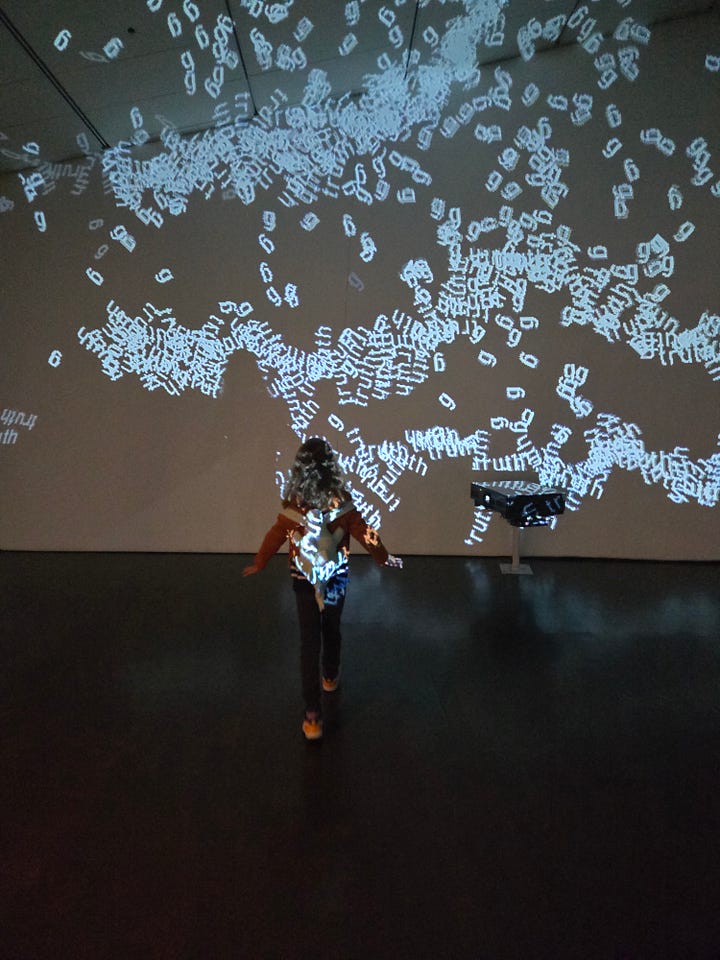
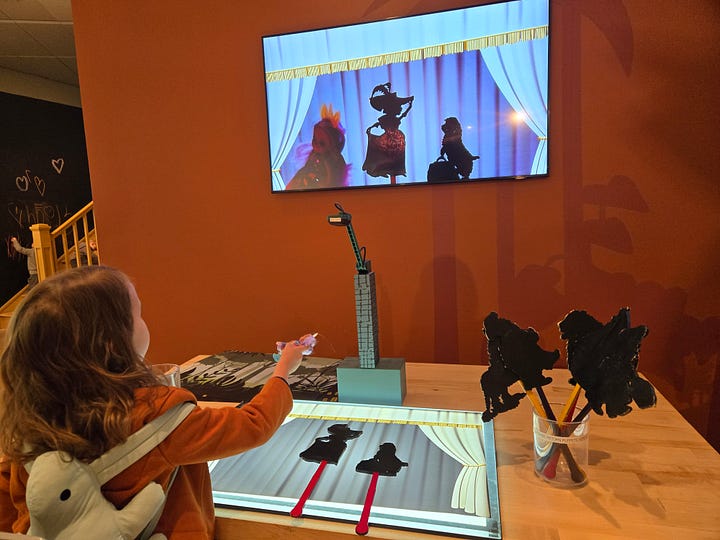
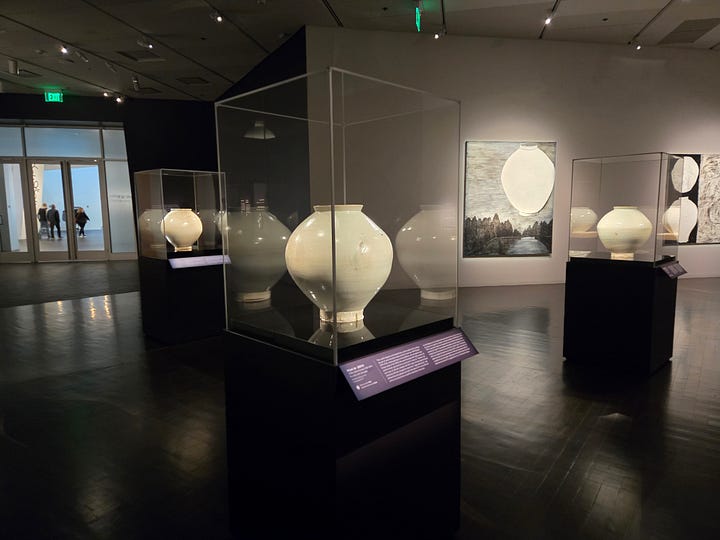
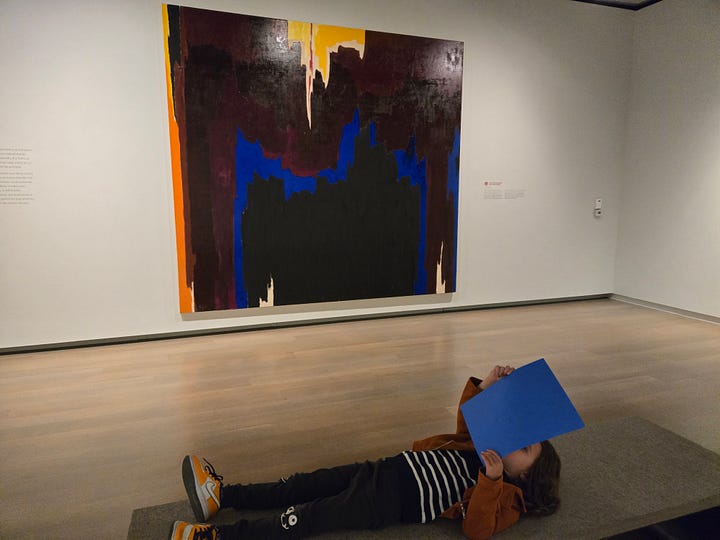
We hit a wall at History Colorado and did not spend as long there as we planned, but we explored The 90s: Last Decade Before the Future. Standing in a model of a Blockbuster Video and trying to explain how much time I spent there when I was young was pretty weird. Overall, I wish there had been more objects in the exhibit. There were a lot of panels of photos/timelines. Also, I wish my childhood were not in a history museum.
Saturday, we went to see a production of A Midsummer Night’s Dream put on by the Denver Center for the Performing Arts in the parking lot of Columbine Library.1 It was a fast-paced, abridged production, and we all enjoyed seeing how the Shakespeare in the Parking Lot crew used a pickup and auto parts as a set and props.
Sunday was an SCFD free day at the Museum of Nature and Science. By that point, I was pretty tired, so I let Julio be the field trip director while I toted our daughter’s doll around.
The seven counties including and surrounding Denver created a Science and Cultural Facilities Tax District in which a penny on every $10 in sales tax goes to the SCFD. This money goes into a pool that distributes more than $80 million annually in funding to almost 300 arts and culture organizations across the Front Range. In return, there are free days for residents of the participating counties throughout the year. I think it is a brilliant idea and part of why we have such vibrant museums and heritage sites in the area.
With the bread and all the art, I feel well-fed. I’m behind on farm chores and did not do much writing, but taking the time to learn a new skill and to see creative works so different from what I am working on gave my spirit a big lift. Also, being out in the community, unplugged for much of the weekend felt restorative. Of course, it was also a lot of germs, and my daughter is home with a cold, asleep in Mom and Dad’s bed as I write this. Oh well. I’ll feed her some sourdough and we’ll go work in the garden together later.
If you’re local, they’re doing Romeo & Juliet on May 10th at Standley Lake Library.






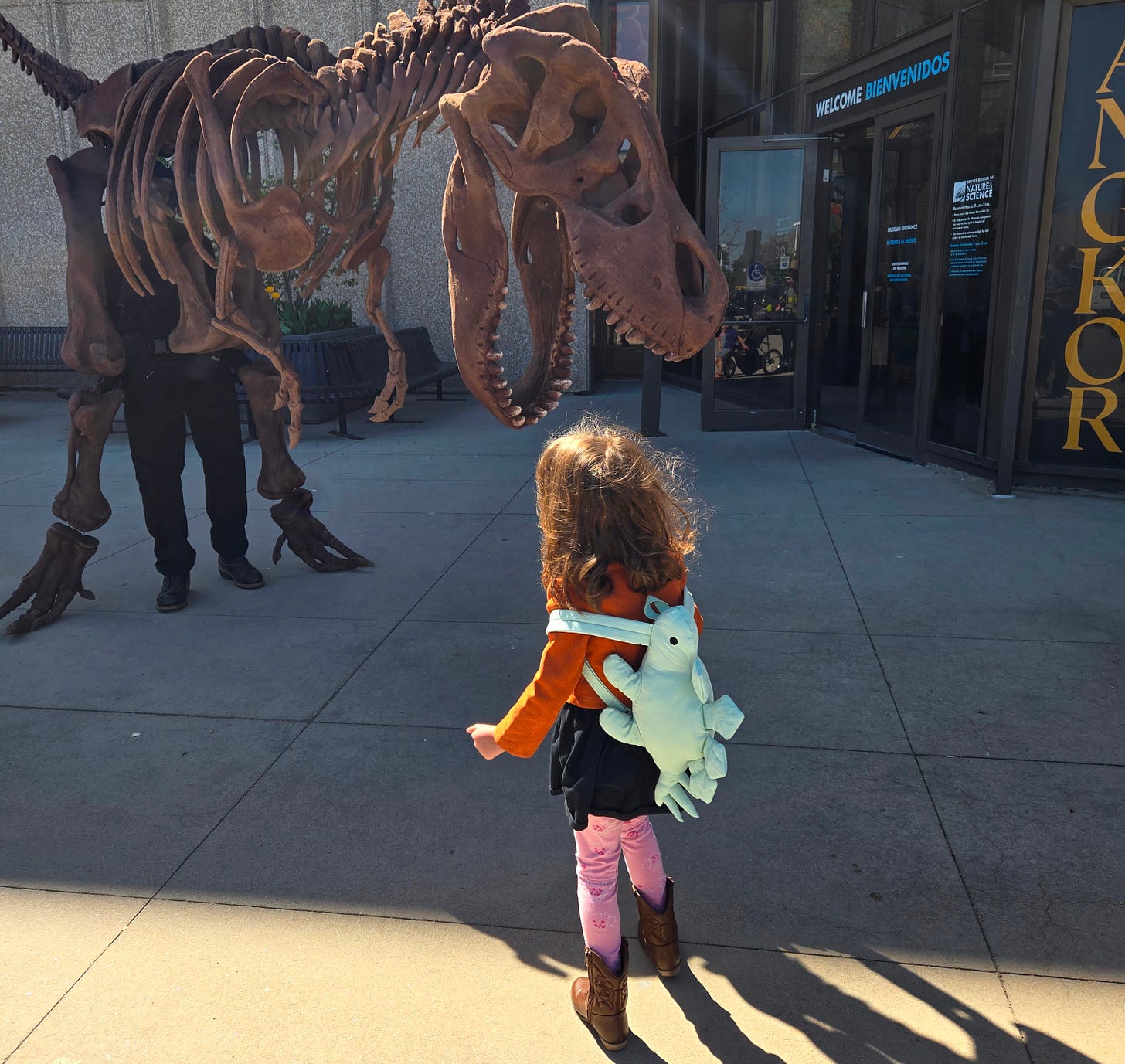
I love outings to museums. They are my favorite days! I am going to put them in my list for my next round of family visits. Wonderful achievement with your sourdough bread. Keep working on it and you will do great. Baking bread is one of my great loves!